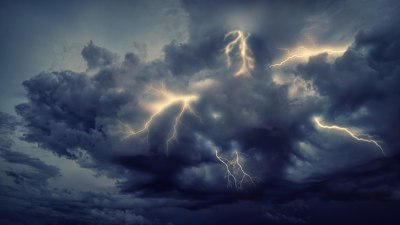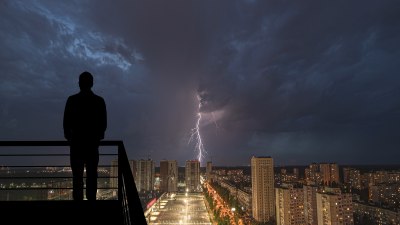The Truth About Weather Lore
Explore the fascinating world of weather lore and its implications on our understanding of meteorology.

Weather lore encompasses traditional sayings and beliefs related to weather patterns, often passed down through generations. These maxims can provide intriguing insights into how our ancestors interpreted the natural world. While some weather lore holds a grain of truth, others are steeped in myth. This article delves into the origins, accuracy, and relevance of various weather sayings.
Understanding Weather Lore
Weather lore originated from the necessity of predicting natural phenomena, essential for agriculture and daily survival. Early humans relied heavily on their observations of nature to foresee changes in the environment. These observations evolved into sayings and proverbs that could be shared and remembered easily. Many weather proverbs were not scientifically validated but rather rooted in the experiences of those who came before us.
Common Weather Sayings
Several well-known weather sayings include “Red sky at night, sailor’s delight; red sky in morning, sailors take warning.” This phrase suggests that a red sunset indicates clear weather ahead, while a red sunrise signals a possible storm. The reasoning lies in the scattering of sunlight by atmospheric particles, which scientists confirm can indicate weather systems. Similar sayings exist globally, emphasizing localized knowledge and cultural significance.
The Science Behind the Sayings
Many weather proverbs have a foundation in meteorology, often relying on natural signals. For example, the adage, “When it rains, it pours,” conveys that precipitation often occurs in heavy bursts rather than light, sporadic showers. This aligns with the scientific understanding of rain development. However, such sayings oversimplify complex meteorological processes. Weather phenomena stem from numerous variables, and while folklore may capture trends, its interpretations can vary.
Cultural Variations in Weather Lore
Weather lore varies significantly across cultures, influenced by local climates and geographical factors. In Mediterranean regions, people might say, “When the wind is in the east, ’tis neither good for man nor beast,” highlighting historical associations with adverse weather patterns. Similarly, the Japanese proverb “Furu-sato no ame wa kaze o shiru” (the rain of one’s hometown knows the wind) reflects deep cultural connections to the land and weather. Such sayings embody not just meteorological beliefs but also community identity and experiences.
Modern Interpretation of Weather Lore
In today's world, modern meteorology employs advanced technology and scientific methods to understand weather patterns. While weather lore can provide anecdotal insights, these are now supplemented by satellite imaging, radar technology, and computer modeling. Meteorologists can predict weather with high accuracy, rendering many traditional sayings less relevant. Nevertheless, weather lore still holds cultural significance and enhances our understanding of human interaction with nature.
Debunking Common Myths
Many weather sayings are deeply rooted in myth. For instance, the saying “If you can see the mountains, it’s going to rain; if you can’t, it’s already raining” suggests visibility indicates weather changes. However, this is not scientifically backed, as mountain visibility can be affected by many factors unrelated to rain. Understanding these myths helps distinguish between genuine weather prediction and folklore.
The Role of Technology in Modern Weather Prediction
Technology has dramatically transformed weather prediction. Meteorologists now rely on a plethora of tools, including weather satellites, Doppler radar, and supercomputers that process vast amounts of data. These advancements have greatly increased forecasting accuracy and provided insights into long-term climate trends. While weather lore remains a fascinating cultural element, embracing scientific understanding is paramount in addressing contemporary weather challenges.
Weather Lore as Cultural Expression
Weather lore reflects cultural nuances and the relationship people have with their environment. It often reveals agricultural practices, historical events, and seasonal activities essential to a community’s existence. Through storytelling, these sayings transcend generations, maintaining cultural identity and providing communal wisdom. Local weather sayings can play a vital role in shaping behaviors and practices associated with farming, fishing, and other local industries.
The Intersection of Weather Lore and Climate Change
As climate change alters weather patterns, evaluating weather lore’s relevance becomes essential. Many traditional sayings may not hold true in the face of new environmental realities. Changes in temperature and precipitation can lead to outdated proverbs that no longer align with observed phenomena. This necessitates a reevaluation of practices based on folklore in favor of scientifically informed approaches to adaptation and preparation for climate-related events.
The Enduring Fascination with Weather Lore
Despite the advancements in meteorology, weather lore endures as a captivating segment of human culture. It intertwines scientific inquiry with cultural expressions, reminding us of our historical connection to nature. While it is imperative to approach weather lore with a critical eye, recognizing its roots and significance can enhance our understanding of humanity’s interaction with the environment around us. The blend of ancient wisdom with modern knowledge fosters a deeper appreciation for the complexities of weather and helps guide future generations in navigating the atmospheric phenomena we face.











